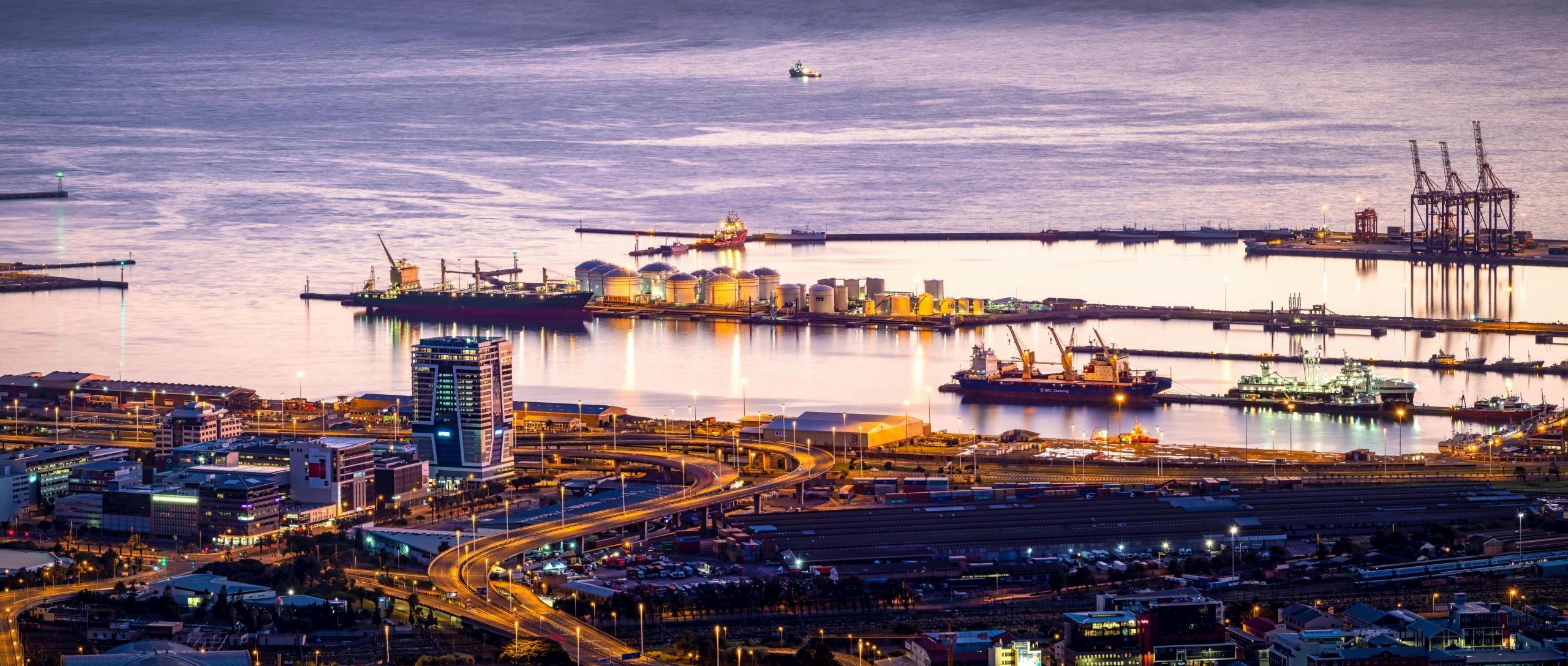The BRICS acronym represents an economic alliance of five major emerging countries:
- Brazil
- Russia
- India
- China
- South Africa
The union holds significant promise for influencing the global economy and geopolitics. Understanding the dynamics of the BRICS union is essential for grasping the challenges and opportunities it presents.
Let's start our expedition learning more about this innovative and expanding alliance.

A Brief History of BRICS
The BRICS union was formally established in 2006, with the goal of fostering partnership and mutual expansion among its member countries. The collective influence of these members has the potential to reshape the existing world order, challenging the dominance of traditional fiscal powers. The alliance are projected to play a pivotal role in driving global financial growth and establishing new models of governance and international trade.
The BRICS union now comprises of five diverse countries, each with its unique fiscal, political, and social landscape. In January 2024, six new members will join the alliance:
- Argentina
- Egypt
- Ethiopia
- Iran
- Saudi Arabia
- United Arab Emirates
Brazil, Russia, India, China, and South Africa collectively represent almost 40% of the world's population and contribute significantly to global financial output. These nations are characterised by their rapidly expanding middle-class populations, abundant natural resources, and burgeoning consumer markets. Understanding the individual strengths and challenges of each BRICS member is crucial for comprehending the union's collective potential.
Brazil, with its rich biodiversity and vast agricultural resources, holds a prominent position in global food production and trade. Russia's abundant reserves of oil, natural gas, and minerals contribute significantly to the world's energy and commodity markets. India, renowned for its burgeoning tech industry and skilled workforce, is poised to become a global financial powerhouse. China, the world's most populous country and a manufacturing hub, has emerged as a key player in global supply chains and infrastructure development. South Africa, with its diverse mineral wealth and strategic location, serves as a gateway to the African continent.
Who Are the BRICS Countries?

The BRICS members collectively represent a significant portion of the world's landmass and population.
The largest country in South America, is known for its vibrant culture, diverse ecosystems, and financial potential.
The largest country in the world by land area, possesses vast reserves of natural resources and a rich cultural heritage.
The seventh-largest country by land area and currently the most most populous, is renowned for its ancient traditions, technological advancements, and diverse population.
The second-most populous country globally, boasts a rich history, rapid industrialisation, and a burgeoning consumer market.
SA is celebrated for its cultural diversity, mineral wealth, and vibrant democracy.
Each of these countries brings unique strengths and conflicts to the BRICS union, contributing to its dynamic and multifaceted nature. By understanding the individual characteristics and aspirations of the BRICS nations, we can better comprehend the collective potential and challenges of this influential economic alliance.
The Role of IMF and World Bank in BRICS Development
The International Monetary Fund (IMF) and the World Bank play pivotal roles in shaping the expansion trajectory of BRICS countries. These international financial institutions provide critical financial support, technical expertise, and policy guidance to member communities, influencing their fiscal policies and growth strategies. The IMF and World Bank's engagement with BRICS countries has evolved over the years, reflecting the shifting dynamics of global economic governance and the rise of emerging economies.
The IMF serves as a lender of last resort, offering financial assistance to member countries facing balance of payments crises or financial instability. Its policy advice and conditionality provisions have a significant impact on the economic reforms and fiscal policies of BRICS nations, influencing their macroeconomic stability and growth prospects. The World Bank, through its burgeoning projects and financial support, contributes to infrastructure development, poverty alleviation, and sustainable growth initiatives in BRICS countries.

Challenges Faced By BRICS Countries
Despite their immense potential, the BRICS countries face a myriad of trials that impede their growth. Financial disparities, social inequality, political instability, and environmental degradation are among the pressing issues confronting these states. Brazil grapples with deforestation, income inequality, and political corruption, inhibiting its sustainable evolution. Russia contends with geopolitical tensions, financial diversification, and demographic shifts that pose trials to its long-term growth.
India faces persistent confrontation related to poverty, inadequate infrastructure, and environmental sustainability as it seeks to harness its demographic dividend and technological prowess. China confronts environmental pollution, income inequality, and the transition from an export-driven to a consumption-led economy. South Africa struggles with unemployment, income inequality, and social cohesion as it strives to address the legacies of apartheid and promote inclusive growth.

One area where these nations face significant threats is in the field of health. With large populations and varying levels of healthcare infrastructure, the BRICS countries must address issues such as access to quality healthcare, disease control, and the promotion of public health. While each country has its own national health system, collaboration between the BRICS states is crucial to tackle common health threats and share best practices.
One of the key confrontations in the health sector for the said countries is the control of infectious diseases. With dense populations and rapid urbanisation, these nations are particularly vulnerable to outbreaks of diseases such as tuberculosis, HIV/AIDS, and malaria. By working together, the BRICS states can pool their resources and expertise to develop effective strategies for disease prevention, diagnosis, and treatment. This collaboration can include joint research initiatives, sharing of data and information, and capacity building programs. Leveraging their collective strength, they can make significant strides in improving public health and controlling the spread of infectious diseases.
Opportunities in the BRICS Union
Amidst the criticism, the BRICS union presents significant fortuity for fostering economic cooperation, innovation, and sustainable growth. The sheer size and diversity of the BRICS economies offer immense opportunities for trade, investment, and technological collaboration. The collective consumer market of these states presents a compelling opportunity for businesses seeking to expand their global footprint and tap into new growth frontiers.
The BRICS countries also have the potential to drive innovation in key sectors such as renewable energy, digital technology, healthcare, and infrastructure expansion. By leveraging their complementary strengths and expertise, the BRICS nations can foster greater technological innovation, knowledge exchange, and capacity building. The union's emphasis on South-South collaboration and forming finance initiatives provides a platform for addressing common criticism and fostering inclusive growth.
Strategies for Harnessing Growth in BRICS
Realising the full potential of the BRICS union requires strategic approaches that harness the collective strengths and address the shared challenges of its member communities. Enhanced cooperation in trade and investment, infrastructure development, and technology transfer can amplify the impact of the BRICS alliance.
Strengthening institutional linkages, promoting policy coordination, and shaping people-to-people exchanges are essential for building trust and cultivating sustainable partnerships within the union.
Furthermore, investing in human capital, education, and skills progress is critical for unlocking the demographic dividend and nurturing a skilled workforce across the BRICS countries. Embracing sustainable growth practices, renewable energy solutions, and climate resilience measures can pave the way for inclusive and environmentally conscious growth. By prioritising inclusive and equitable expansion, the BRICS states can create a more resilient and prosperous future for their citizens.
Case Studies of Successful BRICS Initiatives
Examining successful initiatives and collaborations within the BRICS union provides valuable insights into the potential for harnessing growth and addressing common hurdles. The New Development Bank (NDB), established by the BRICS countries, exemplifies a successful initiative aimed at financing sustainable infrastructure and enrichment projects. The NDB's focus on green and inclusive infrastructure investments aligns with the shared priorities of the BRICS states and demonstrates their commitment to encouraging sustainable success.
Furthermore, the BRICS Business Council serves as a platform for promoting trade and investment cooperation among businesses in the member countries. The council's initiatives to facilitate cross-border trade, technology transfer, and industry collaboration have contributed to strengthening economic ties and fostering innovation within the union. These case studies underscore the potential for collaborative initiatives to drive sustainable growth and inclusive progress across the BRICS countries.
Future Outlook For BRICS
The future outlook for the BRICS union is shaped by a dynamic interplay of economic, geopolitical, and social factors. As the global fiscal landscape continues to evolve, the BRICS countries are poised to play an increasingly influential role in shaping international trade, investment flows, and maturing cooperation. The union's commitment to advancing South-South collaboration, promoting multilateralism, and cultivating inclusive amelioration bodes well for its future trajectory.
The BRICS countries are positioned to leverage their collective voice and influence to address global challenges, advocate for equitable international governance structures, and drive sustainable enrichment agendas. By deepening their partnerships, enhancing policy coordination, and embracing innovation and technology, the BRICS union can chart a path towards shared prosperity and resilience in the face of evolving global dynamics.















